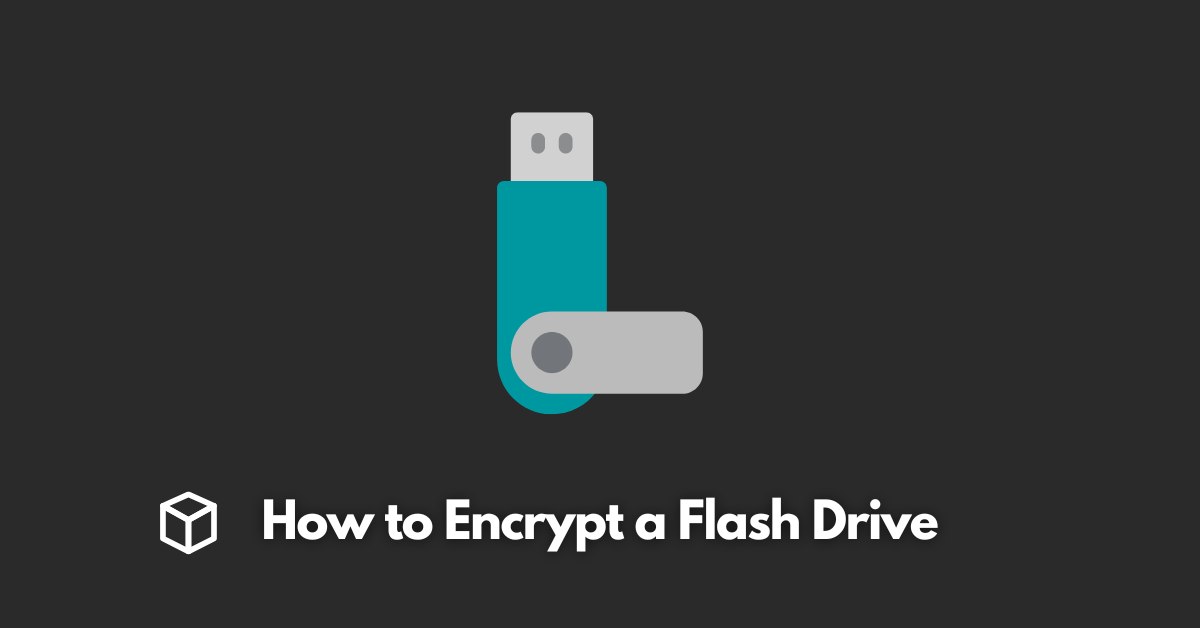The importance of data security cannot be overstated in the current times we are living.
One of the most common ways that people store and transport sensitive information is on a flash drive.
However, simply copying files to a flash drive is not enough to ensure the security of that data.
That’s why it’s important to encrypt flash drives to protect against data breaches and unauthorized access.
In this article, we’ll walk through the process of encrypting a flash drive and provide tips and tricks along the way.
Choosing an Encryption Method
When it comes to encrypting a flash drive, there are a variety of methods available.
Some of the most popular include BitLocker, VeraCrypt, and AES Crypt. Each of these methods has its own pros and cons, and it’s important to choose the one that best fits your needs.
BitLocker
BitLocker is a built-in encryption tool for Windows and is available on most newer versions of the operating system.
It’s a great option for those who are already familiar with Windows and want a simple, integrated solution.
However, it’s not available on non-Windows devices and has less features as compared to other encryption tools.
VeraCrypt
VeraCrypt is a free, open-source encryption tool that is available on Windows, Mac, and Linux.
It’s a great option for those who want more advanced features and the flexibility to use it on multiple platforms.
However, it may be more difficult to set up and use than other options, especially for those who are less technically-savvy.
AES Crypt
AES Crypt is a simple encryption software that is available on Windows, Mac, and Linux.
It’s a good option for those who want a simple, easy-to-use encryption tool that can be used on multiple platforms.
Ultimately, the choice of encryption method will depend on the user’s needs and level of technical expertise.
For most users, BitLocker is the easiest and most convenient option, while VeraCrypt offers more advanced features and flexibility.
AES Crypt is a good option for users who want a simple, easy-to-use encryption tool.
Setting Up Encryption
Once you’ve chosen the encryption method you want to use, it’s time to set up the encryption on your flash drive.
The exact process will vary depending on the method you’ve chosen, but in general, the steps involve formatting the flash drive, creating an encryption key, and then encrypting the drive.
For BitLocker, you can follow these steps:
- Insert your flash drive into your computer.
- Go to the Start menu and search for “BitLocker.”
- Click on “Turn on BitLocker” for the flash drive you want to encrypt.
- Choose how you want to unlock your drive each time you plug it in.
- Choose how much of the drive to encrypt.
- Choose the encryption method.
- Choose the encryption key.
- Save the encryption key to a safe location.
- Click “Start encrypting” and wait for the process to complete.
For VeraCrypt and AES Crypt, you can follow similar steps but with different interfaces.
It’s important to note that during the encryption process, all the data on the flash drive will be deleted.
So, it is recommended to take a backup of the important data before proceeding.
When setting up encryption, it’s important to be mindful of the encryption key and to store it in a safe location. Without the encryption key, the data on the flash drive will be inaccessible.
Using an Encrypted Flash Drive
Once the encryption process is complete, the flash drive will be ready to use. To access the data on the drive, you’ll need to enter the encryption key and unlock the drive.
The exact process will depend on the encryption method you’ve chosen.
- For BitLocker, you’ll be prompted to enter the encryption key each time you plug the drive into your computer.
- For VeraCrypt and AES Crypt, you will have to open the software and enter the encryption key to mount the drive and access the data.
It’s important to regularly back up the encryption key to ensure that you’ll be able to access the data on the flash drive even if something happens to the key.
Additionally, it’s important to keep the flash drive itself secure, as a lost or stolen flash drive can easily fall into the wrong hands.
Conclusion
Encrypting a flash drive is a simple but important step in protecting sensitive data.
By following the steps outlined in this post, you can easily encrypt your own flash drive and ensure that your data is secure.
Remember to regularly back up the encryption key and keep the flash drive itself secure.
For additional information and resources on flash drive encryption, you can refer to the official website of the encryption software you have used.




